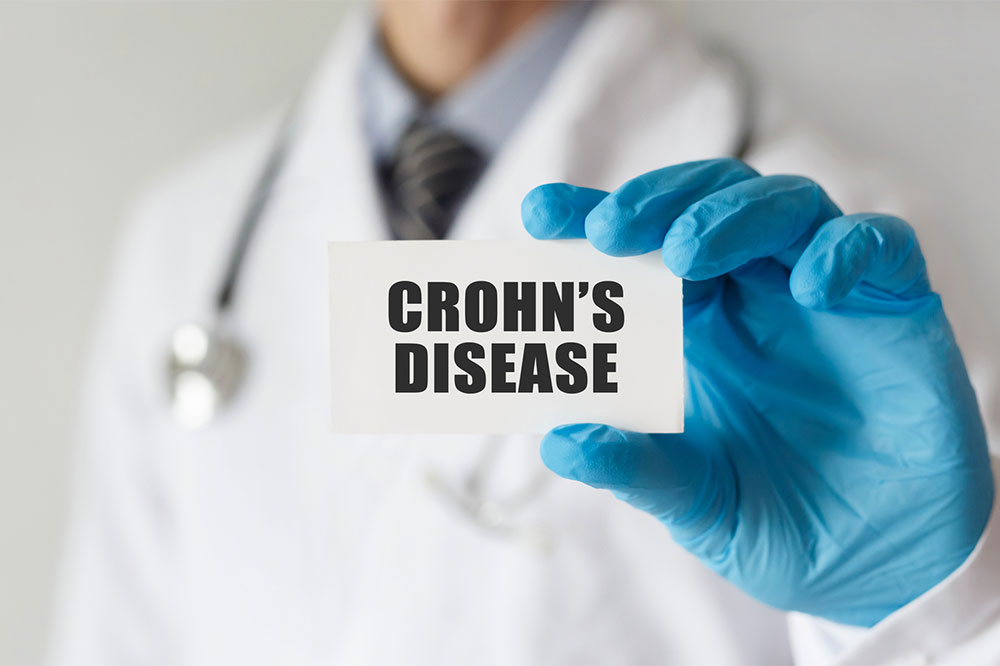
Crohn’s disease – warning signs, causes, diagnosis, and management
Crohn’s disease causes irritation and inflammation in the digestive tract. The disease can affect any part of the GI (gastrointestinal) tract, and the symptoms depend on which part of the digestive tract is affected. People with this disease are more likely to experience flare-ups followed by periods of remission when there is no sign or symptom.
Warning signs
- Persistent and chronic diarrhea
The digestive tract inflammation causes persistent diarrhea, which is one of the worst symptoms of Crohn’s disease. - Abdominal pain and cramping
People with this disease often experience pain and cramping in the abdomen. - Rectal bleeding
Blood in the stool is a symptom of concern for those with Crohn’s disease. - Reduced appetite and weight loss
Loss of appetite is another symptom to watch for. Reduced intake of calories will lead to unintended weight loss in people with Crohn’s disease. - Fatigue
Extreme fatigue is caused by the body’s response to inflammation and can affect the quality of life.
Causes
Though the exact cause is unknown, certain factors may increase your risk of developing the condition.
- Immune system
A malfunctioning immune system is likely to cause Crohn’s disease. According to experts, when a virus or bacteria causes the body’s immune system to attack healthy cells, the body’s defense reaction triggers the symptoms of this condition. - Heredity
Crohn’s disease is more common if you have a parent or sibling with the disease. Studies are still on to find the link between genes and Crohn’s disease. - Environmental factors
Smoking and consuming a high-fat diet may increase the disease’s risk.
Diagnosis
Your healthcare professional will recommend a combination of diagnostic tests to confirm a Crohn’s disease diagnosis. These tests may include the following:
- Blood tests
A blood test will check for red blood cells or signs of anemia. It will also check the count of white blood cells for signs of infection. - Stool test
A stool analysis will check for bacteria or parasites to rule out an infection. - Colonoscopy
A colonoscopy procedure allows doctors to view the rectum and entire colon directly. A colonoscopy provides accurate information and can be used to assess the severity of any inflammation. - Computerized tomography (CT)
A CT scan uses computer-aided X-ray techniques and provides more detailed images of the rectum and colon. - Upper GI endoscopy
An endoscope, which is a long, thin tube, is used to see inside the upper digestive tract. A small camera is mounted to the end of the tube for examination. The endoscope goes through your mouth into the stomach. - Balloon-assisted enteroscopy
In this procedure, a balloon is attached to a longer endoscope that allows the doctor to look further down into the small intestine. The balloon is inflated and deflated to move the tube through the intestine. - Capsule endoscopy
This procedure requires the patient to swallow a capsule with a camera in it. The images are transmitted to a recorder that is worn on the belt. The images are then downloaded on a computer and checked for Crohn’s disease signs. - Magnetic resonance imaging (MRI)
An MRI test helps evaluate any anal abscess or fistula around the anal area or small intestine. Magnetic fields and radio waves help create detailed images of the inside of the body.
Treatment
The disease is not curable, but various things can help improve your quality of life. This includes medical treatment, lifestyle, diet, and surgery. Medical treatment is aimed at reducing inflammation that triggers the symptoms of Crohn’s disease.
- Surgery
Surgery is done to treat complications and help people resume their normal life. People who develop a fistula, anal fissure, or intestinal obstruction may need surgery to correct intestinal perforations, blockages, or bleeding. Some common types of surgery are strictureplasty, bowel resection, proctocolectomy, and fistula removal. - Diet and nutrition
For people with Crohn’s disease, maintaining good nutrition is essential. Symptoms such as diarrhea and reduced appetite can prevent your body from getting enough nutrients. The best way is to make healthy choices that help ease your symptoms and avoid foods that cause flare-ups. Eating small meals and staying hydrated can also make you feel better. - Bowel rest
In severe cases, bowel rest is another treatment recommended by healthcare professionals. This method involves going without food or drink for several days or weeks to let the intestines heal. Patients with Crohn’s disease are nourished through an IV or feeding tube.
Living with this disease can be very difficult and frustrating. But with a combination of medical treatment and proper diet and nutrition, you can manage your symptoms and get your life back on track.




